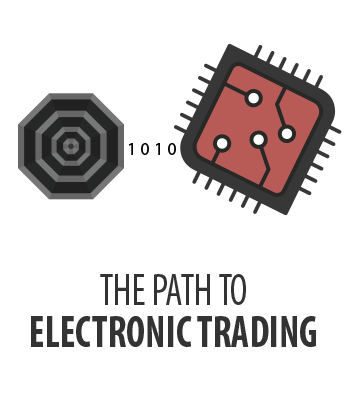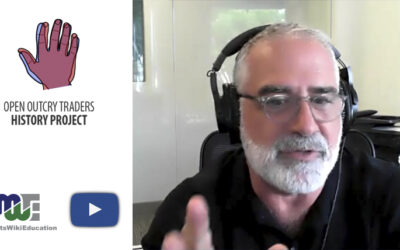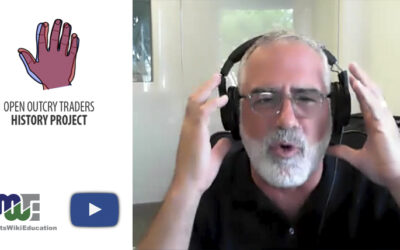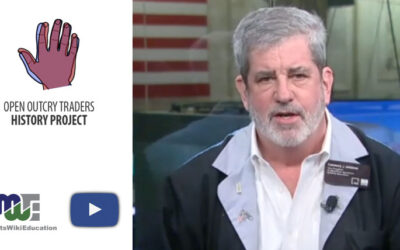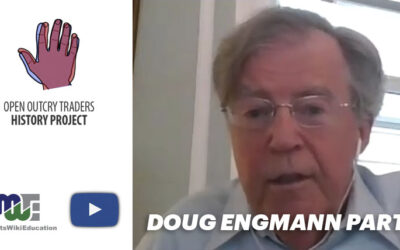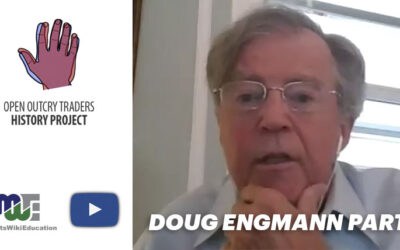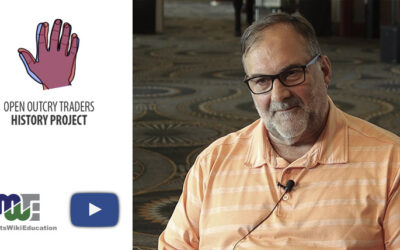Larry Abrams’ career started with a chance encounter on a ski lift which was prompted by a good deed. He and some friends helped to push a stranded car that was stuck during a blizzard in Park City, Utah. The next day on the lift line he was paired with the man whose car he had helped push out the night before, who happened to be an options market maker at the Cboe. By the time he got off the lift line, he knew that was what he wanted to do. He visited the man in Chicago (Abrams was living in Philadelphia) but realized that options also traded on the Philadelphia Stock Exchange. He did some networking and ended up as an options market maker on the PHLX.
Abrams clerked for the man for a few months and then he leased a seat at the PHLX through the man’s company.
Abrams joined Cooper Neff as a partner when the firm had less than 10 employees. He progressed to running a value line operation in Kansas City for Cooper Neff. Then, still through Cooper Neff, he came to the Cboe to manage and run their floor operation.
The company was acquired by a Japanese bank in the early 1990s. Abrams bought a “COM” seat (Commodity Options Member) on the CBOT which allowed him to trade only options. He later bought another seat that allowed him to trade futures, and leased it out. He never bought a full seat. He also leased a number of yellow badges, which allowed him to trade everything.
He said, “I wish I’d bought the full seat, but the COM seat was pretty good as well.”
He hired a lot of staff for Cooper Neff, on the floor and in the back office. Some of them have had very successful careers in the industry or started their own prop trading firms.
“When I went independent, I brought clerks to the floor, but the clerks in many cases went on to become traders for other firms or for themselves. I did help a number of people buy seats,” he said.
He credits the trading floor for his strong immune system. “When you spend 30 years with guys spitting on you and shouting in your face, you’re pretty much [inoculated] to everything,” he said.
Looking back, the only thing he might do differently would be to take a lot more risk. “The guys who last a long time are very risk-averse, and I am as well. But I could have pushed the boundaries a bit more,” he said. “I could have left the floor, seen electronic trading coming but like an athlete who stays on a little past their prime I stayed a little too long.”
He stopped trading on the floor when the opportunities “just weren’t there any more.” As an options trader, he needed edge – the markets had to be inefficient. The screen equalized everything and made everything more efficient, he said. So there was no need for the middleman. It was a job that became obsolete.
What excited him about the floor was the atmosphere: the opportunities, the action every single day. “The things I remember most are the practical jokes and the pride when I had a visitor and showed them the trading floor.”
His worst memory was the “outright hostility.”
“It’s a very strange place – standing shoulder to shoulder with people all year long and knowing very little about most of them. You would help each other out, but you always knew you were one step away from being decimated by them if they could.”
He traded through the most memorable events: the Challenger explosion, 9-11, the Chicago flood. But the worst feeling was the MF Global fiasco, he said.
“I was a customer of a division of MF Global. Walking in and not having your key card work and then having an armed guard outside your office door was disturbing.”
His trading style evolved from his time at Cooper Neff but it was always about edge. “And I looked for arbitrage, or as close to arbitrage as you can get,” he said.

